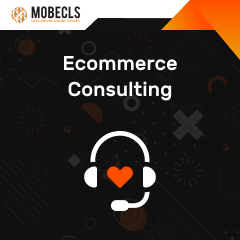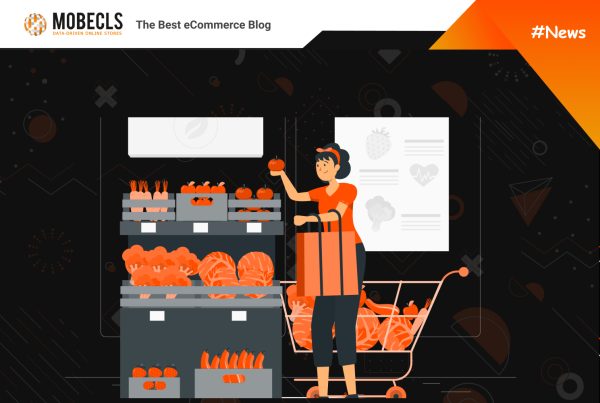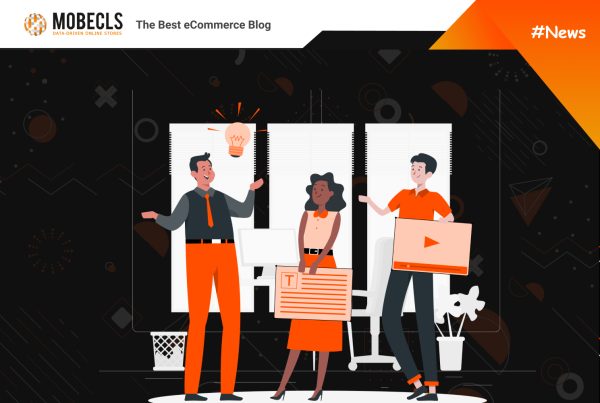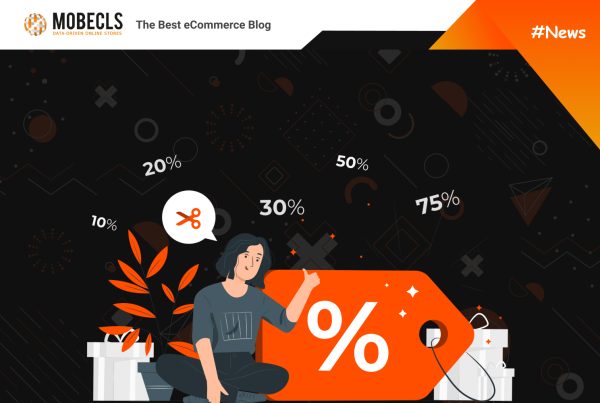In the ever-evolving realm of eCommerce, pricing holds immense power over customers’ decision-making processes and ultimately determines the triumph of online businesses. Discovering the right eCommerce pricing strategies is a key to attracting buyers, maximizing profits, and gaining a competitive edge. In this article, we’re unveiling the very best pricing techniques — from value-based pricing to psychological tactics — and providing real-world examples to illustrate their impact. By mastering these strategies, you will elevate your ecommerce venture to unprecedented levels of success, fostering loyalty among your clientele and driving exponential growth.
The Best eCommerce Pricing Strategies
Cost-Based Pricing
Cost-based method is one of the most used eCommerce pricing strategies. It takes into account the production costs, overhead expenses, and desired profit margins. This approach ensures that prices are set in a way that covers expenses and generates adequate profits.
The methodology for cost-based pricing involves several steps. First, the business calculates the cost per unit by identifying and evaluating direct costs like materials, labor, and manufacturing expenses. Indirect costs such as rent, utilities, and administrative expenses that contribute to the overall cost structure are also considered.
Next, the desired profit margin is determined. This can be a percentage markup or a fixed monetary value. It reflects the level of profit the business aims to achieve for each unit or overall sales. Then, to arrive at the selling price, the desired profit margin is added to the cost per unit.
Example: an apparel retailer calculates that the production cost of a t-shirt, including materials and labor, is $5 per unit. They aim to achieve a profit margin of 50% on each sale. Applying cost-based pricing, they add a markup of $2.50 (50% of $5) to the cost per unit. This results in a selling price of $7.50.
Cost-based pricing in eCommerce offers several benefits:
- Profitability: By considering production costs and desired profit margins, cost-based pricing helps businesses generate sufficient revenue to cover expenses and achieve profitability.
- Simplicity and Transparency: Cost-based pricing provides a straightforward and transparent approach to pricing. Customers can understand the reasoning behind the pricing, fostering trust and confidence in the business.
- Cost Control: Businesses practicing cost-based pricing gain a deeper understanding of their cost structure by closely examining costs. This enables them to identify areas for cost optimization, improve operational efficiency, and enhance profitability.
Value-Based Pricing
Value-based pricing is one of the most powerful eCommerce pricing strategies. It determines the selling price of a product or service based on the value it delivers to customers. Unlike traditional approaches that focus on costs or competition, value-based pricing aligns pricing with the overall value that customers get from a particular offering. Moreover, this customer-centric approach allows businesses to capture the true worth of their products or services, reflecting the value customers are willing to pay.
Examples: An eCommerce fashion retailer specializes in selling designer clothing and accessories. They recognize that their customers highly esteem brand reputation, quality craftsmanship, and the exclusivity associated with their products. To reflect this perceived value and brand equity, the retailer prices their items at a premium compared to similar products in the market.
The benefits of value-based eCommerce pricing strategy:
- Maximizes Revenue: Value-based pricing empowers businesses to capture the maximum value that customers are willing to pay for their products or services. By aligning the price with the perceived value, businesses can optimize their revenue and enhance profitability.
- Differentiation from Competitors: Businesses using value-based pricing can differentiate themselves from competitors who solely compete on price. This approach fosters customer loyalty and reduces the emphasis on price comparisons, as customers recognize the distinct value they receive.
- Enhanced Customer Satisfaction: Value-based pricing ensures that the price aligns with the perceived value customers receive. Overall, this alignment enhances customer satisfaction and reduces the likelihood of customers feeling that they have overpaid for a product.
Penetration Pricing
Penetration pricing is a strategic approach where businesses set initial prices lower than competitors to gain market share and stimulate demand. This attracts price-sensitive customers, encourages trial purchases, and builds brand awareness.
Comprehensive market research helps identify target customers, understand their preferences, and assess price sensitivity. Setting attractive and competitive prices below established competitors ensures profitability, even with slim margins initially.
Example: an online grocery delivery startup offering lower prices on essential items to attract price-conscious customers and a fashion retailer launching with limited-time discounts to capture attention and build brand loyalty.
The benefits of penetration pricing include easier market entry and rapid growth, better customer acquisition, and loyalty. Moreover, it enables businesses to quickly gain market share, differentiate themselves, attract new customers, and foster long-term relationships.
Price Skimming
Price skimming is a pricing strategy where businesses start with high initial prices and gradually lower them over time. This approach is commonly used for innovative products targeting early adopters or customers willing to pay a premium for the latest features. In addition, it allows businesses to maximize revenue during the product’s early lifecycle stages before facing intense competition.
Implementing price skimming involves identifying the unique value proposition of the product or service and setting high initial prices that reflect its distinct features. Over time, as the market matures, prices are gradually reduced to attract more price-sensitive customers.
Examples: Apple’s iPhone launches, where they initially set high prices to appeal to early adopters, and gaming console manufacturers like Sony and Microsoft, who start with premium prices for new console releases.
Price skimming offers several benefits in eCommerce. It maximizes revenue from early adopters, enhances perceived value and brand image, and allows for strategic market segmentation by targeting customers who value innovation.
Bundling Pricing
Bundling pricing is a strategy where businesses offer packages containing two or more products or services together at a discounted price compared to purchasing them individually. The purpose is to create value for customers, encourage them to buy more, increase the average order value, and boost overall sales.
To implement bundling pricing, you need to identify complementary products or services that naturally go together. Then, you should determine the discount or price reduction offered when customers choose the bundled package. This discounted price should be appealing and motivate customers to select the bundle.
Example: a retailer offering a package deal consisting of a smart TV, streaming device, and soundbar at a discounted price compared to buying each item separately. This bundle provides customers with a convenient solution and cost savings. Subscription services also employ bundling pricing by offering different tiers with varying features and content access at different price points.
The benefits of bundling pricing in eCommerce are increased sales volume, as customers are incentivized to purchase more items than originally planned. It also leads to a higher average order value as customers are enticed by the attractive deal. Furthermore, bundling can help clear excess inventory or promote less popular items by combining them with more popular products, driving sales for the entire package.
Dynamic Pricing
Dynamic pricing, also known as real-time pricing or demand-based pricing, is a strategy where businesses adjust their prices in response to various factors such as demand, competition, inventory levels, and customer behavior. This approach allows businesses to optimize pricing for maximum revenue and profitability by adapting to market fluctuations and trends.
Implementing dynamic pricing involves several key steps:
- Data Collection and Analysis: Gather and analyze relevant data, including market trends, customer behavior, competitor pricing, inventory levels, and external factors that may impact demand. Utilize advanced analytics tools to process and derive insights from this data.
- Determine Pricing Variables: Identify the key variables that will impact pricing decisions. These variables can include factors like demand levels, time of day, seasonality, customer segments, or competitor pricing.
- Set Pricing Algorithms: Develop algorithms or use pricing software that can analyze the data and pricing variables in real-time. These algorithms will determine the optimal price point based on predefined rules and goals.
- Continuous Monitoring and Adjustments: Continuously monitor market conditions, customer behavior, and pricing performance. Make adjustments to pricing as needed based on the insights gained from real-time data analysis.
Example: airline ticket pricing, where prices change rapidly based on seat availability, demand for specific flights, and time of booking. Ride-sharing services like Uber and Lyft also employ dynamic pricing, increasing prices during peak demand periods. Retail eCommerce utilizes dynamic pricing based on factors like demand, inventory levels, and competitor pricing, with prices varying throughout the day or week.
Dynamic pricing provides a competitive advantage by quickly responding to market conditions and competitor pricing. Also, this pricing strategy helps optimize inventory levels, reducing excess inventory or preventing stockouts, leading to better inventory management and cost efficiency.
Psychological Pricing
Psychological pricing is a strategy that capitalizes on the psychological biases and perceptions of consumers to influence their purchasing decisions. By setting prices in a way that creates specific psychological effects, businesses can make prices appear more appealing, attractive, or affordable to customers.
Psychological pricing method involves several eCommerce pricing strategies:
- Charm Pricing: This tactic involves setting prices slightly below round numbers, such as pricing a product at $9.99 instead of $10.00. By leveraging the left-digit effect, where consumers perceive the price as significantly lower, businesses can create an impression of affordability and entice customers to make a purchase.
- Prestige Pricing: With prestige pricing, businesses set higher prices to evoke a perception of luxury, exclusivity, or superior quality. This strategy takes advantage of the psychological association between higher prices and premium value, attracting customers who equate price with value.
- Price Anchoring: Price anchoring involves presenting a higher-priced item before the target item, making the target price seem more reasonable or affordable in comparison. By setting a higher reference point, businesses can influence customers to perceive the target price as a better deal or value.
- Decoy Pricing: Decoy pricing entails offering multiple options, including a decoy item that makes the target option more appealing. By strategically setting a higher-priced decoy item that is less attractive, businesses can nudge customers towards choosing the target item, as it appears to offer the best value.
Example: an online retailer pricing a product at $49.99 using charm pricing to create a psychological impact, making it seem more affordable and enticing to customers. A software provider offering subscription plans with a significantly higher-priced Premium option utilizes prestige pricing, as customers associate higher prices with advanced features and superior quality.
The benefits of psychological pricing in eCommerce are significant. It influences customer perception, making prices appear more favorable, affordable, or attractive, thereby increasing the perceived value customers receive. This, in turn, enhances their willingness to make a purchase. Additionally, psychological pricing tactics can lead to enhanced conversion rates by tapping into consumer biases and influencing their decision-making.
Ecommerce Pricing Strategies: Bottom Line
In today’s globalized and open market, market participants recognize the importance of effectively integrating marketing strategies and tactics with flexible pricing approaches. A modern competitive pricing strategy involves implementing the company’s mission while considering geo-economic and geopolitical factors of the business environment, as well as understanding the needs and behavioral patterns of buyers.
 If you want to be ahead of your competitors and make sales, you need a solid online business strategy, which is vital for both eCommerce newcomers and already established businesses. If you have doubts about your eCommerce strategy or don’t have it, we’ll help you fix or create it.
If you want to be ahead of your competitors and make sales, you need a solid online business strategy, which is vital for both eCommerce newcomers and already established businesses. If you have doubts about your eCommerce strategy or don’t have it, we’ll help you fix or create it.




